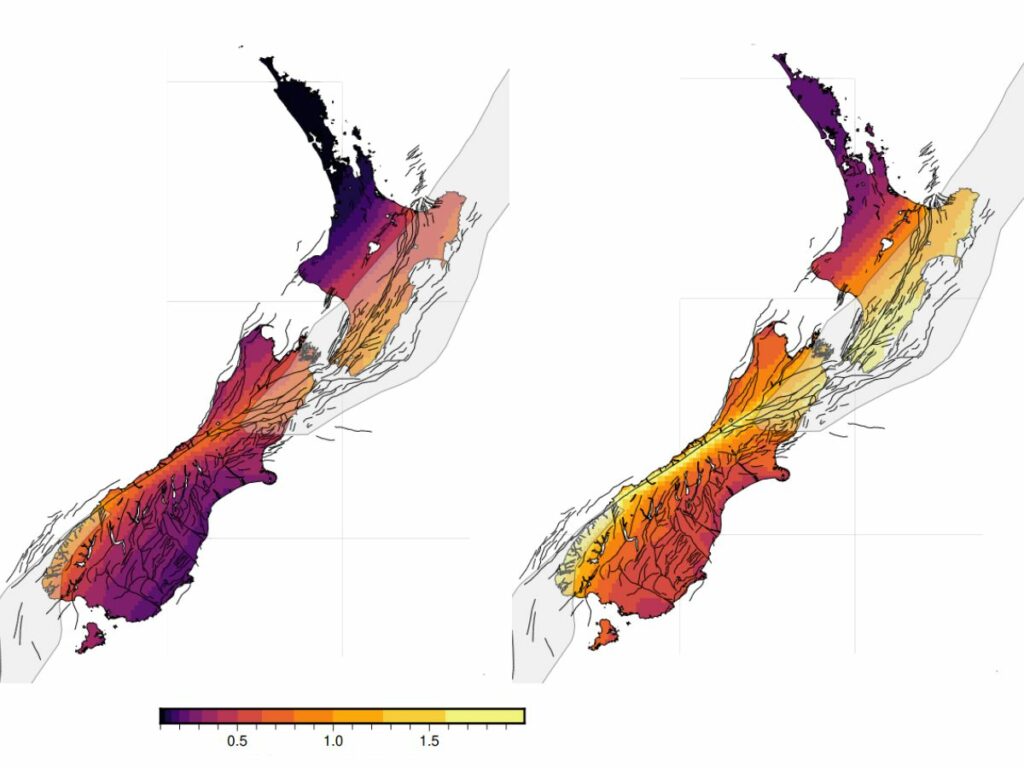Aotearoa New Zealand’s best estimate for how much and how often the ground will shake in future earthquakes comes from Te Tauira Matapae Pūmate Rū i Aotearoa, the National Seismic Hazard Model (NSHM). A new version of the model was released in October 2022 showing, on average, a 50% increase in hazard over the previous model published a decade earlier. While we may not feel like celebrating the higher hazard, we can celebrate that we now have an up-to-date, state-of-the-art understanding of earthquake hazard across the country.
Led by GNS Science, and funded by the Ministry of Business, Innovation, and Employment and Toka Tū Ake EQC, this update to the NSHM was not a trivial piece of work. Given the increased understanding of earthquake science over the last decade, the development of new modelling techniques, improved computing capability, and the requirement for a robust, peer-reviewed process, there was a lot of work to do.
The solution lay in broad collaboration. Over 50 scientists from 15 institutions and 5 countries worked on the update with many of the New Zealand participants being Te Hiranga Rū QuakeCoRE investigators. This meant that diverse research fields and leading-edge technology could be incorporated into the model alongside traditional approaches. A technical advisory group of engineers, policymakers, insurance brokers and scientists worked together to ensure the output was as useful as possible for end-users.
The new NSHM is like the trunk of a tree. Below ground is an extensive network of roots – these are inputs to the model like earthquake activity of different faults and how seismic waves shake the ground in different areas. Some of the inputs are models themselves, and have multiple dimensions of space, time, earthquake physics, and associated uncertainties.
Maths and logic bring this intense tangle of roots together into a coherent trunk – so that we get a useful and rigorous estimate of seismic hazard that does justice to current knowledge.
The result is a nationwide increase in seismic hazard we can’t ignore. Regional breakdowns show most regions have either the same or an increased level of seismic hazard, and some regions have twice to three times their previous level. The increase arises in part from better understanding complex earthquake sources such as multiple fault ruptures (like the 2016 Kaikōura earthquake), improved modelling of how the Hikurangi subduction zone might break in earthquakes, and what level of shaking could be observed.
The many and varied uses of the NSHM form the canopy of the tree. The trunk feeds into the branches by informing engineering standards for buildings, roads, bridges and dams; guiding risk assessments for policy-making, insurance, land-use planning; supporting emergency management, business continuity planning, and community resilience. Let’s hope this NSHM update leads to a profusion of foliage in these areas so that earthquake mitigation measures keep pace with what we know of our seismic hazard.
While this new NSHM is already a triumph of collaboration, demonstrating world-leading approaches, its real success will lie in the actions taken towards New Zealand becoming a more earthquake-resilient nation.

